June 1, 2016
Martha O'Kennon

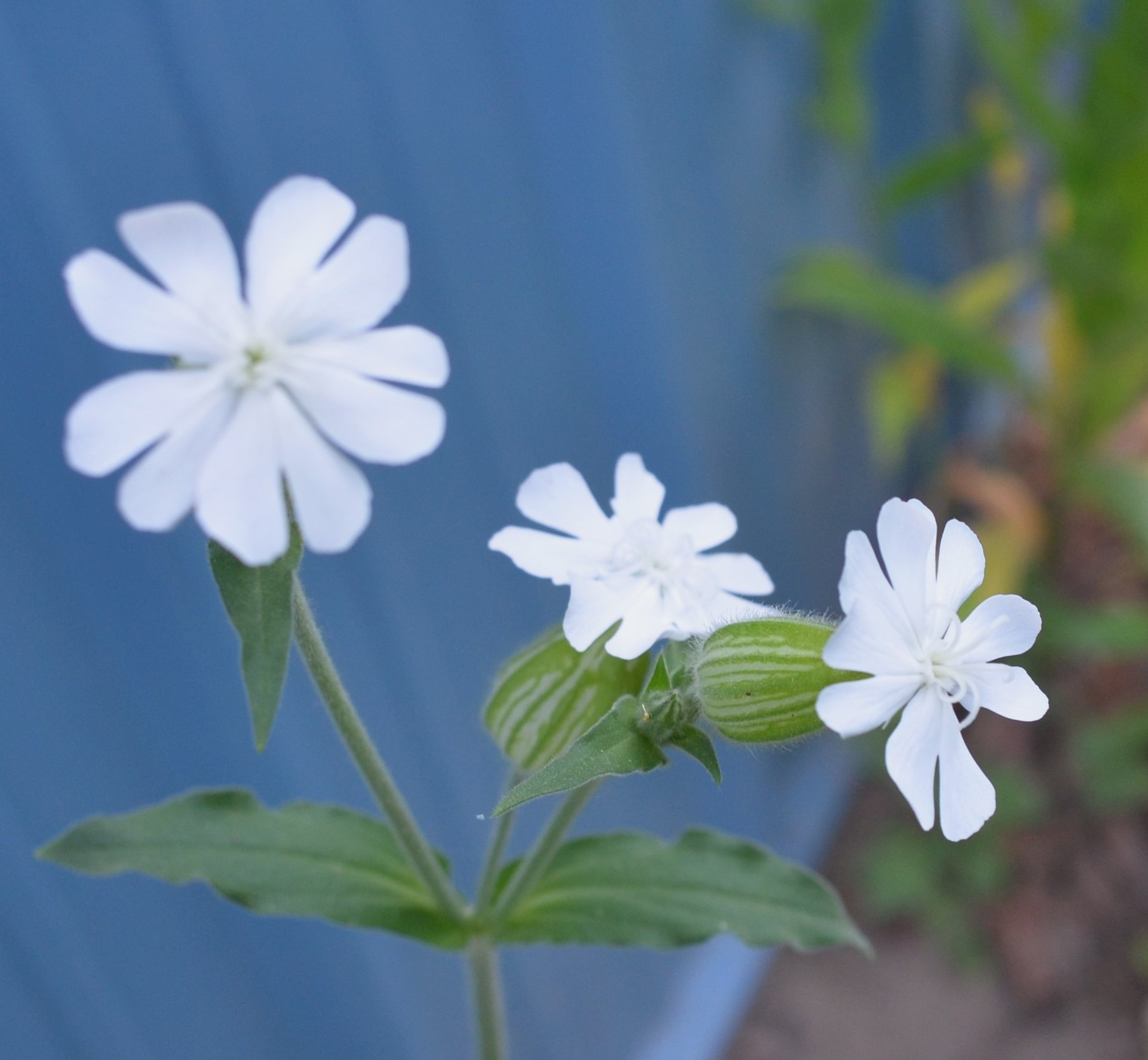
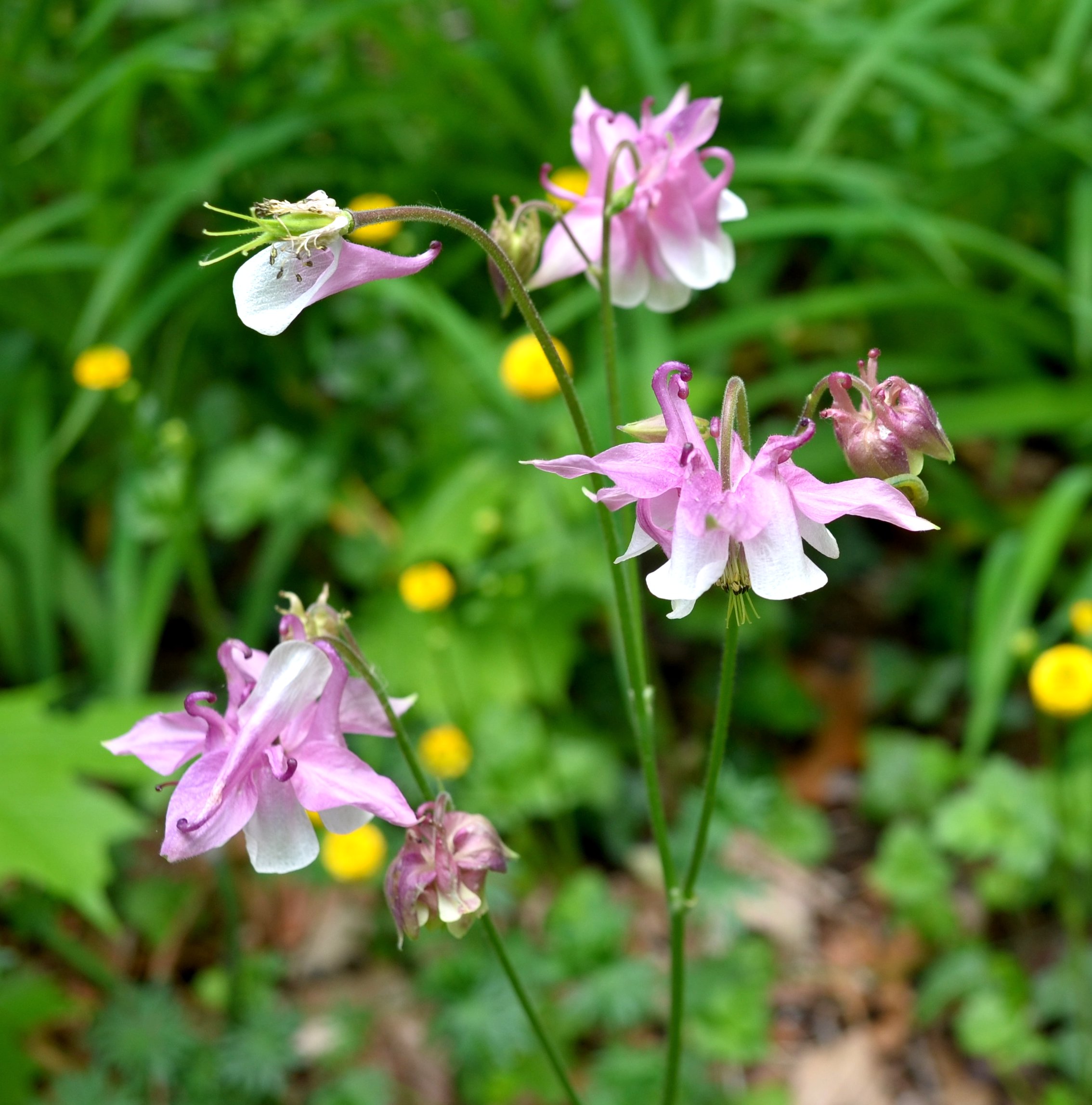
Another week - just a few weeks till the official solstice. Here it has gone from cool to hot and humid. I wish all those people who
"don't believe in" climate change could come spend the summer here. With no air conditioning. Spring flowers are about done, but now the raspberries are blooming and starting to set fruit. I'm eating raspberries every day to make room in the freezer for the new crop. But I'm not the only one who loves them. Above are some of the current landscape - first, the baptisia, which you might have guessed is a relative of peas and beans. Bladder campion is an evanescent wild flower. It is related to other lychnis cousins but has an intriguing air sac just under the blossom proper. All the blooms from my one plant came and went in less than a week. Finally we have one of my columbines that has been through many generations but still comes up each spring.
Remember that there is information in the name of the file for each image. You can see it by mousing over the image - look at the lower left of the screen.
I would try clicking on the image. If the little "+" sign appears, it means you can enlarge again. While it is in "+" mode, click on something you want to see more clearly and it will zoom to that section. Then the info is displayed in the address line above. If the image has been cropped
so that clicking on it doesn't result in a larger picture, you can always hit control-plus to increase the size of the image.
First up is an Ant of genus Camponotus, which contains Carpenter and Sugar Ants. When they do come indoors, they will be tempted by your sugar bowl, not the paneling. Here is one finding nectar in a yellow hawkweed bloom. Next is a more colorful model of this genus Camponotus. Third is an Aphid.
 in dandelion with mystery- 5 27 16.jpg)
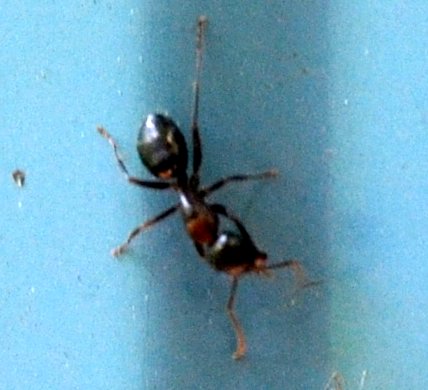
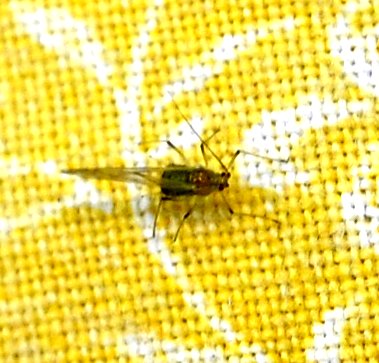
Here, on the raspberry flowers, are a green sweat bee and a tiny bumble bee. Trivia: did you know that Albus Dumbledore was named for a bumble bee? (By the way,I hear there is a new Harry Potter book coming out- 16 years later!)
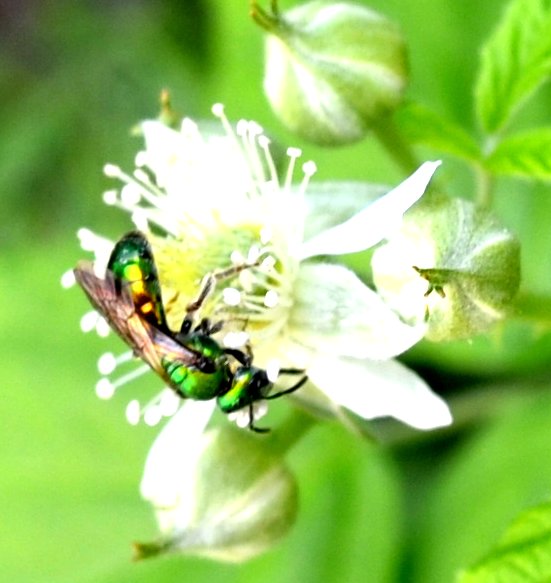
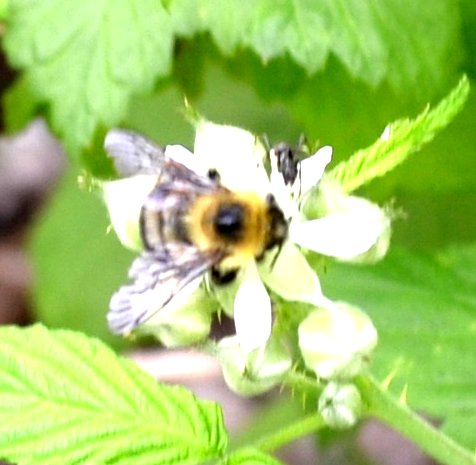
This little bee is everywhere. For such a common species, you would think I would have ID'ed it by now. It also has a pint-sized relative that looks like a transistorized copy. Second, a slightly stretched-out model, and last a Nomad bee - This little purple and gold bee could be a mascot for Albion.
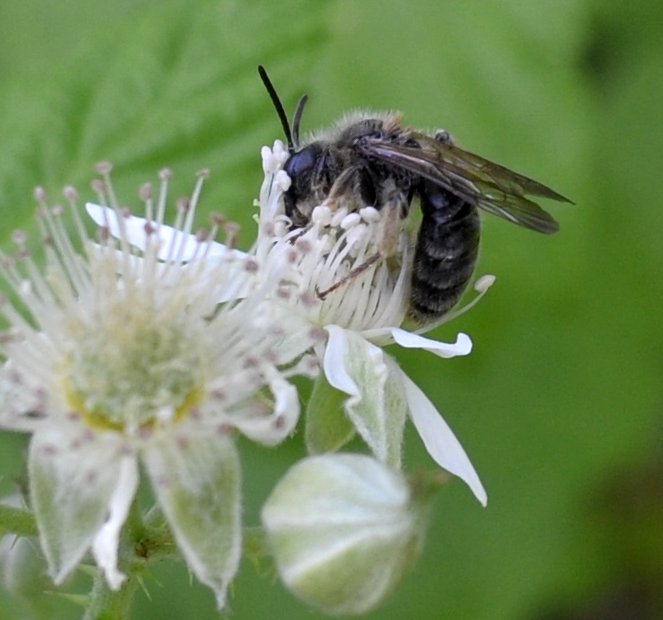 .
.
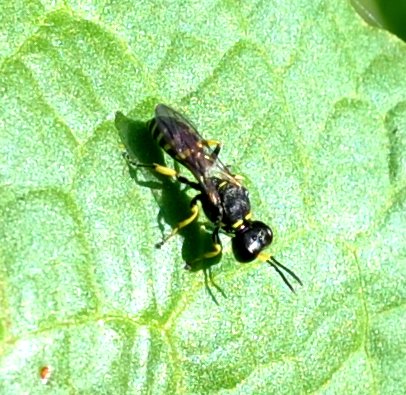
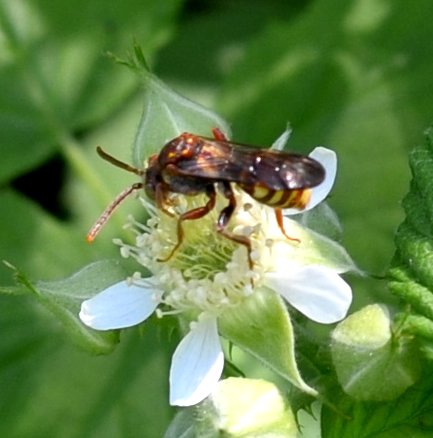
This tiny bee is almost invisible, it has itself tucked so tightly into a Dame's Rocket blossom. And here's a goldish little fellow on a raspberry leaf. This blondish bee I may have been calling a Mason bee, but it is too blond for the usual Masons.
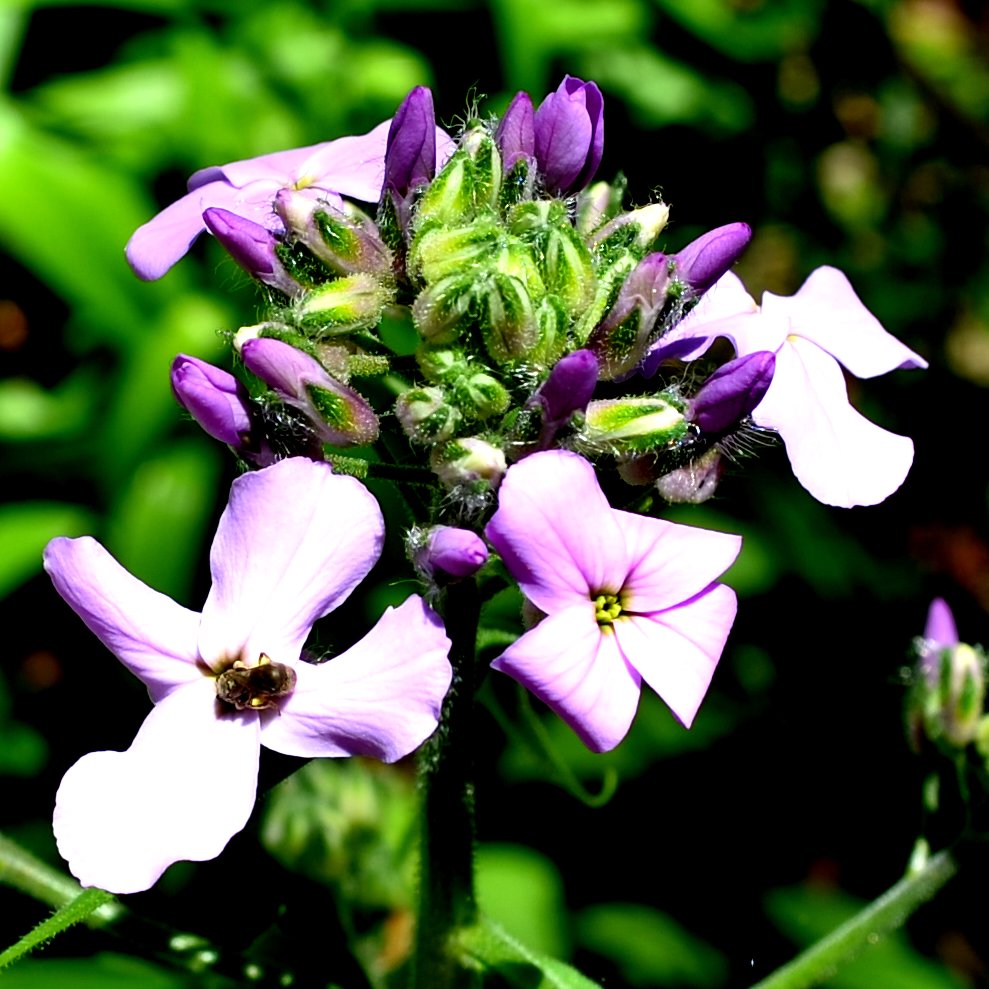
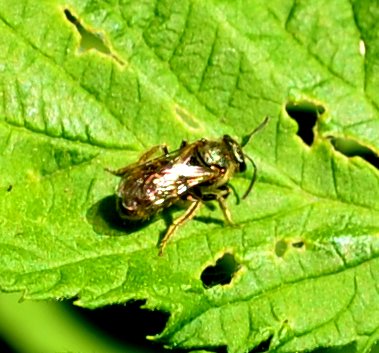
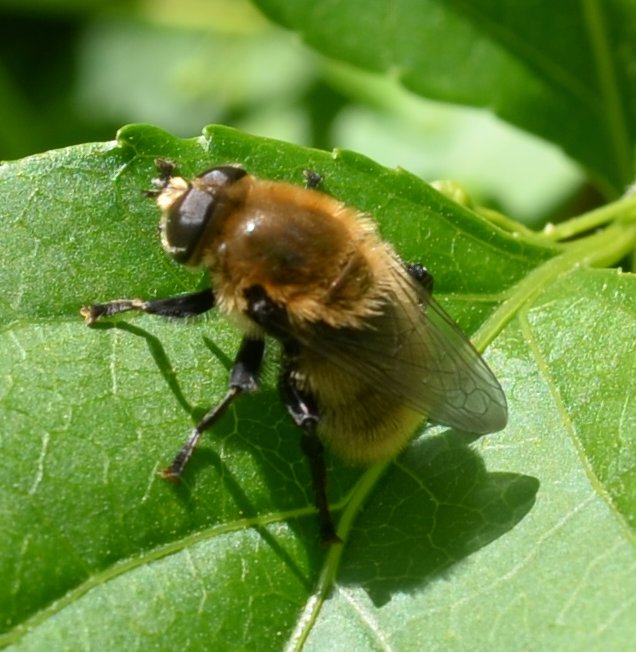
We did pretty well for beetles this week! These two 4-lined potato beetles are on the nightshade (it's ok, potatoes are a member of the nghtshade family.) The next beetle was almost invisible even with trifocals - it's only about 1 mm long. And this one was hard to make out, having such pale markings on its black back!
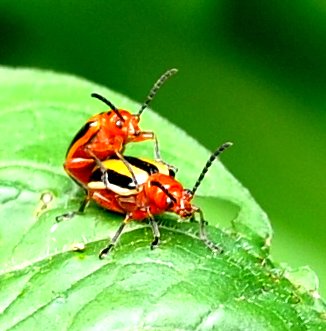
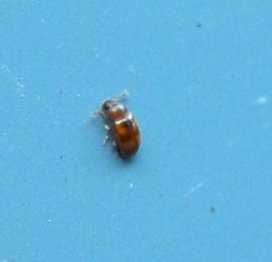
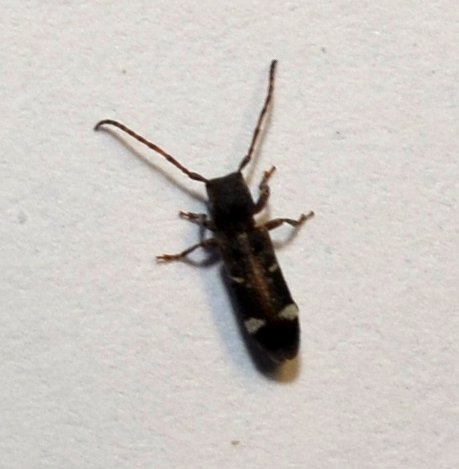
Here is a stranger, but I'm hoping it's easy to ID. The lily leaf beetles were mating last week, but I can't believe their progeny could have grown so fast - I borrowed this grub picture from the next week's cast of characters.
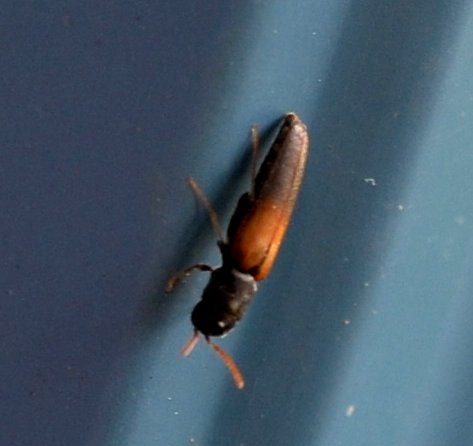
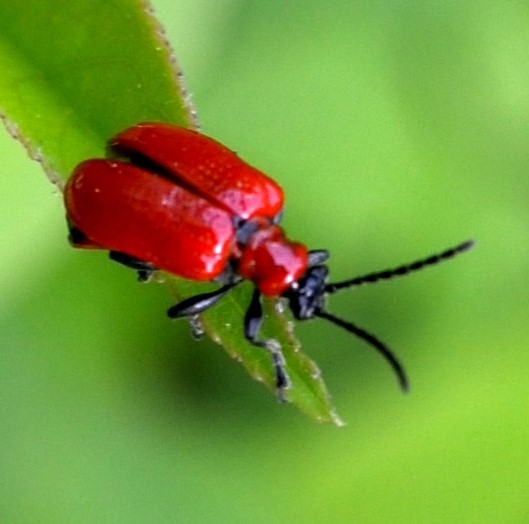
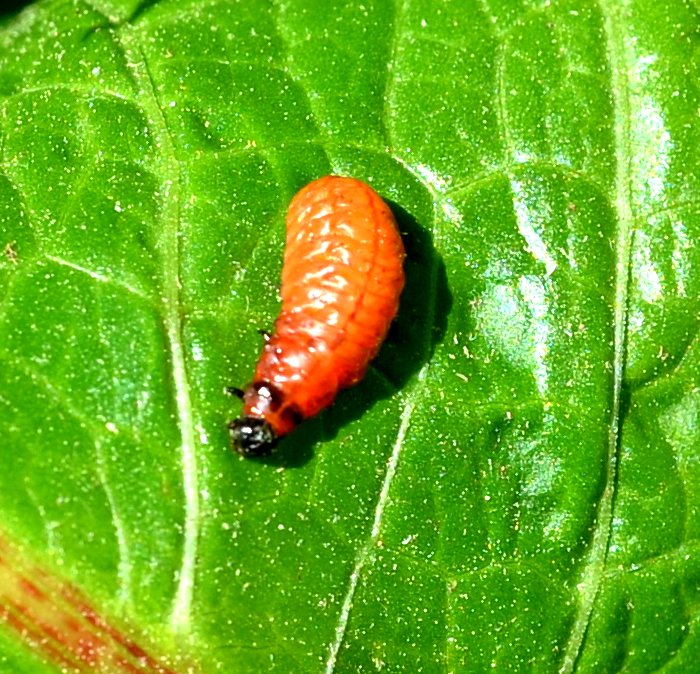
This mystery beetle may have been the one chewing on the raspberry buds. It could come from the genus Oulema. Second is the Scarlet Malachite beetle - last year our first sighting of this beauty was also on the raspberry flowers. This last beetle doesn't look much like a beetle, or maybe it does resemble a smashed one. After a moment, you can probably see why it looks like a tortoise - It's called a Tortoise Beetle.
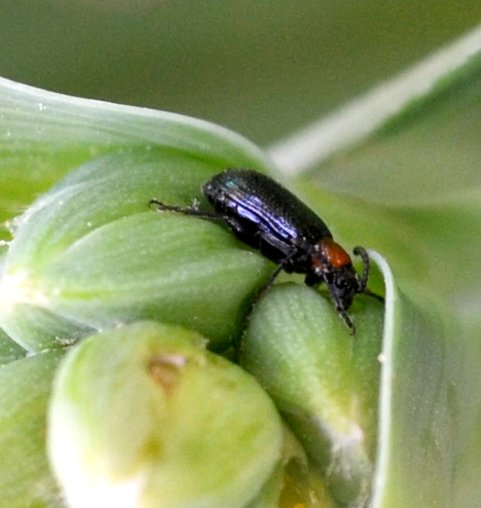
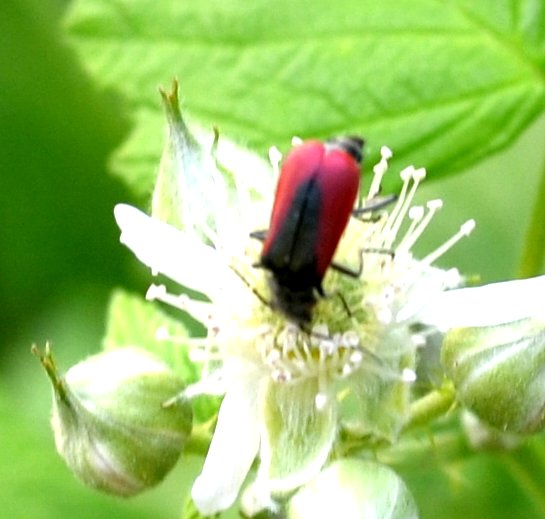
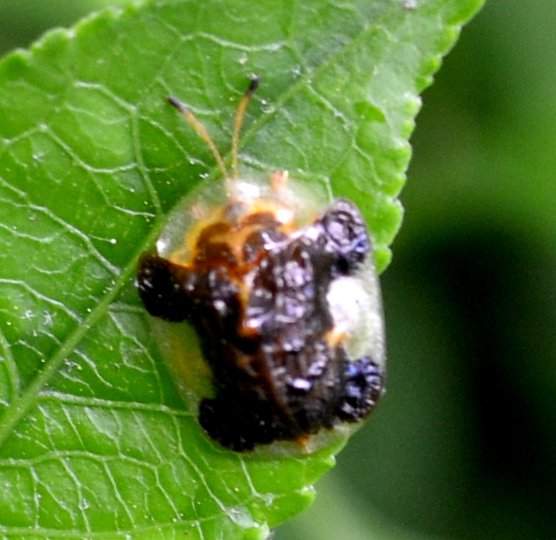
We'll end up on beetles with a few of the more beloved weevils. This fat black one was on the shop wall. The Banana or actually the Rhubarb Weevil still cracks me up. It does so look like a banana peel on legs.
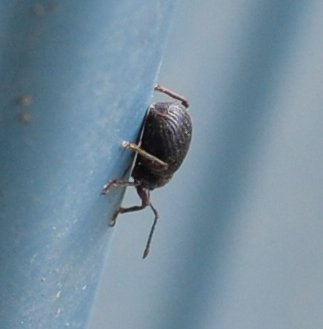
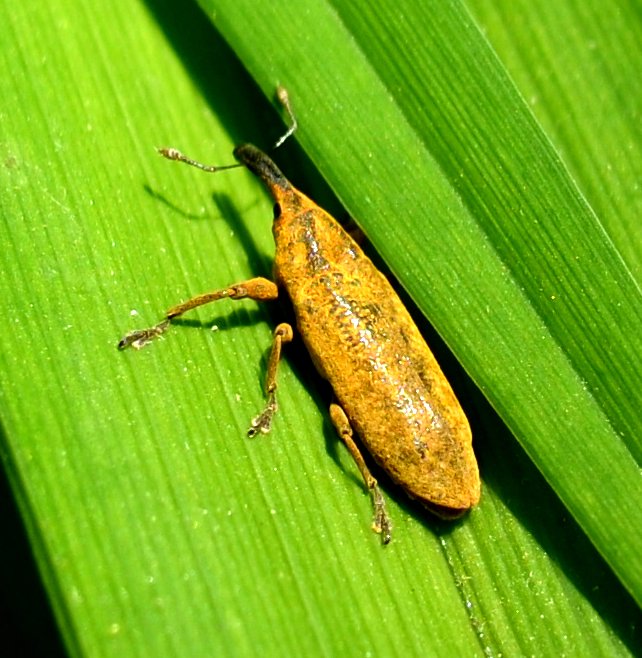
Now to the bugs! This little (huge to us bugs) assassin bug nymph (since it has red eyes, it is the species Zelus luridus) was photographed for 3 or 4 days in a row on this same raspberry flower. This must speak to how many little prey items come by and keep the little assassin interested. I know, I know, I already showed you an assassin bug nymph, but here is a picture of one working on a wasp. You can just barely see the proboscis that it is using to suck the good bits out of this poor wasp. Last is one of those mirid plant bug nymphs growing fast! And here are two different stink bugs, one a marvelous green and brown, the other grey.
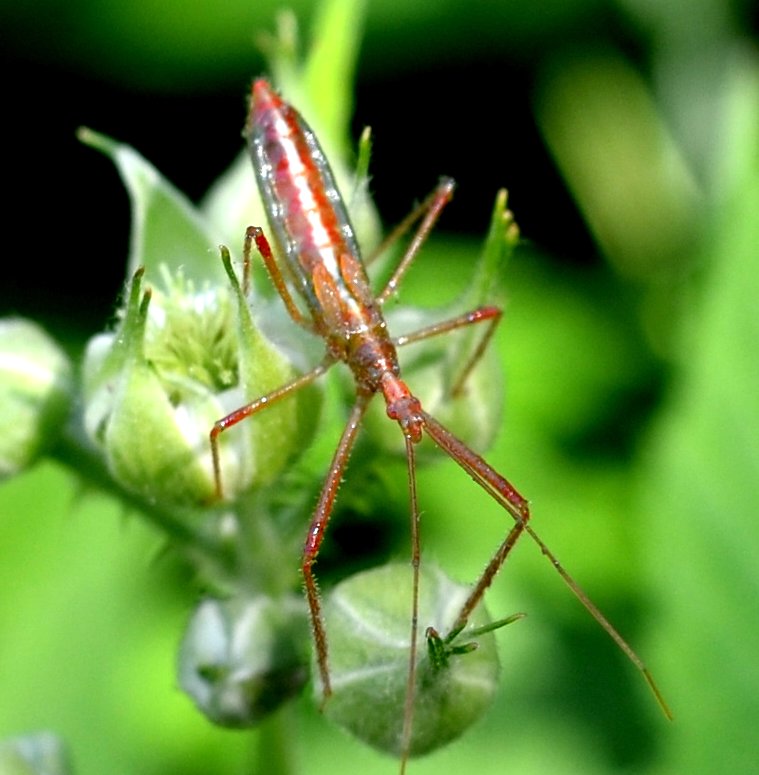
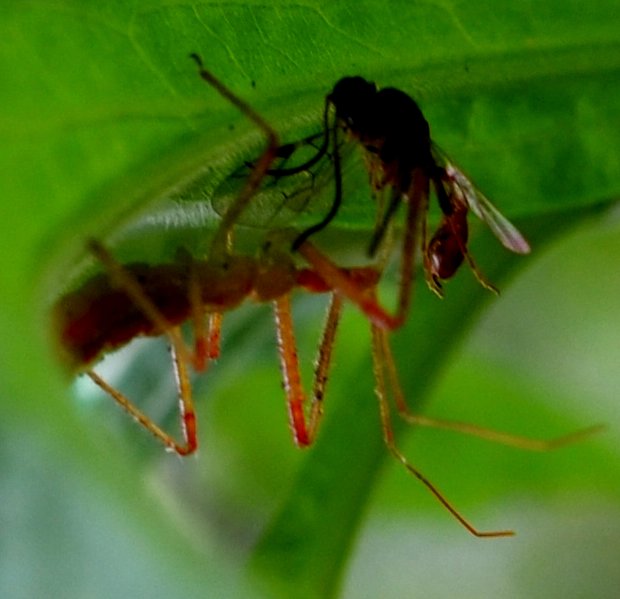
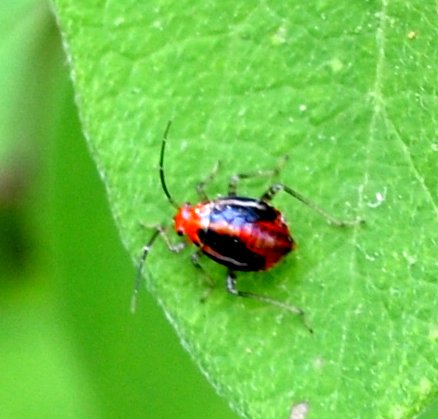
And here are two different Stink Bugs, one a marvelous green and brown, the other grey.
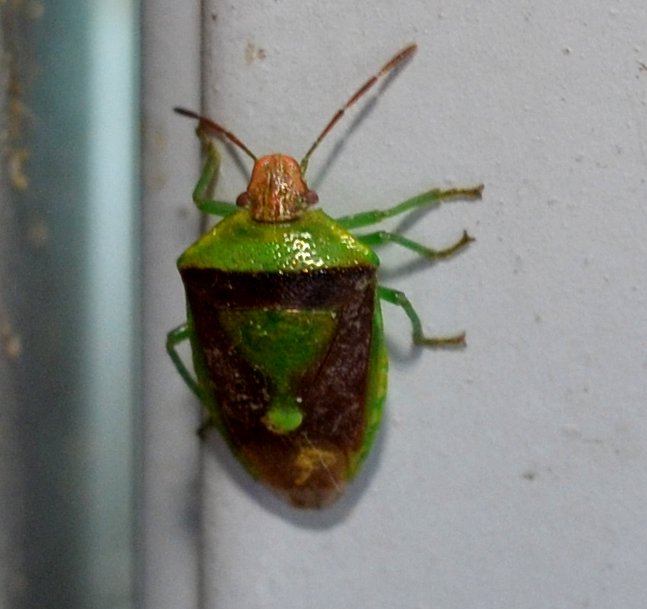
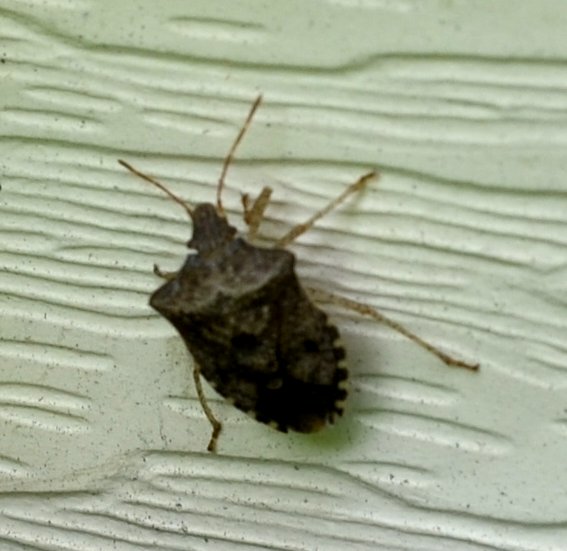
Finally we're seeing a few leafhoppers that don't just fly off when they hear the shutter. This first one is actually a treehopper, probably Entylia carinata, the one that lives on thistle. We'll be seeing more soon. Next is a four-spotted Agallia quadripunctata leafhopper, and last is one of those little green jobs. (G is for green).
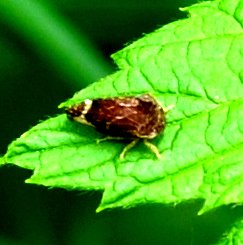
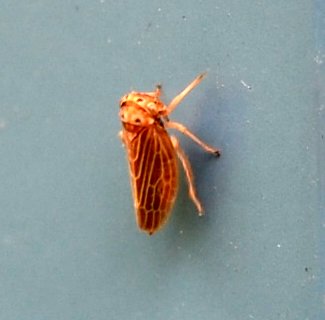
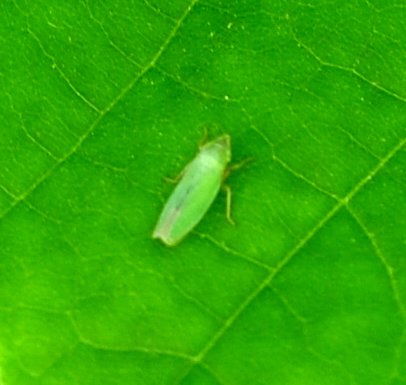
We have had a number of caterpillars and a few moths. Caterpillars first: The first is one of the prettiest caterpillars, and also the most stomped ones. It is the Forest Tent Caterpillar, which does like the trees, but does not build a tent like its pals, the Eastern Tent Caterpillars. The Forests just pile up close to each other. They don't do anywhere near the damage made by the pals, but there are occasions. Second is a Cutworm or Dart Moth, and third is a mystery.
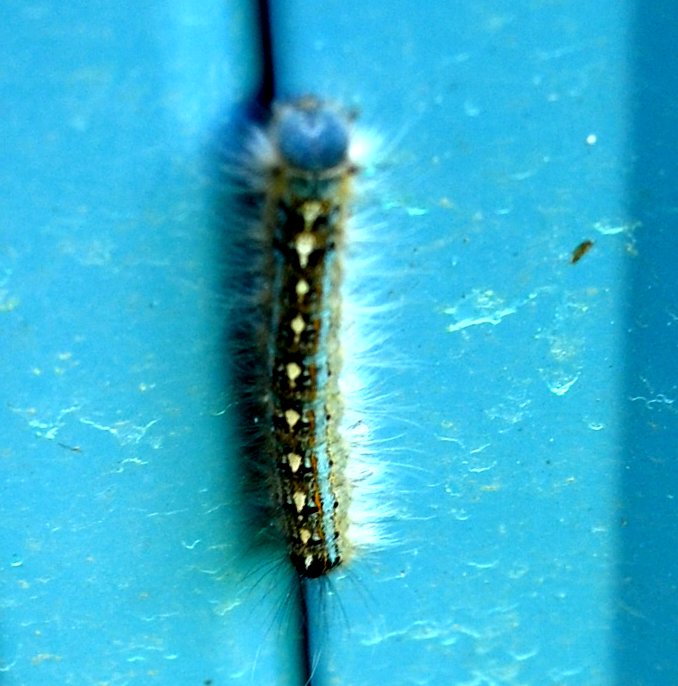
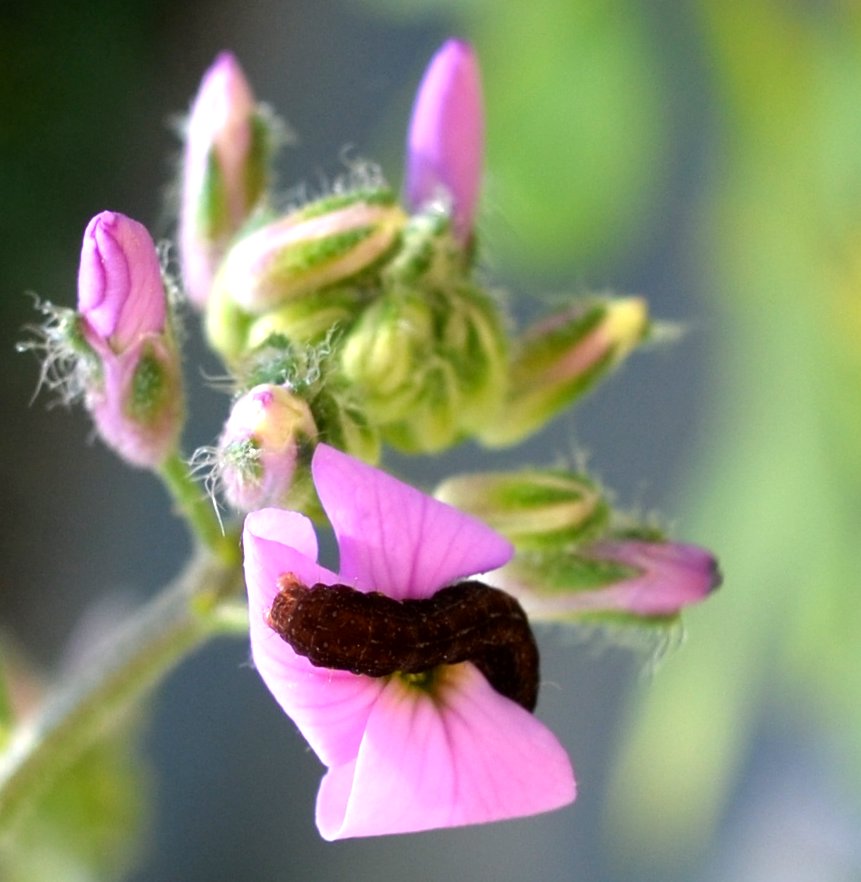
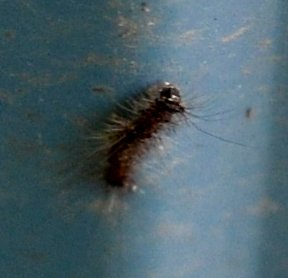
The moths were mostly small and unknown and desirous of staying that way. Here is a pretty little white one (despite losing a chunk of one wing). The strange little whiteish one we saw last time. It is probably a miner, remember? This pretty larger spottled one was attracted to the lamp as I waited to see who was doing in my toads last week. It turns out to be a Hickory Tussock Moth - I see the caterpillar fairly often, but this is the first time to see the adult! This tiny moth is so pretty! It's a grass miner.
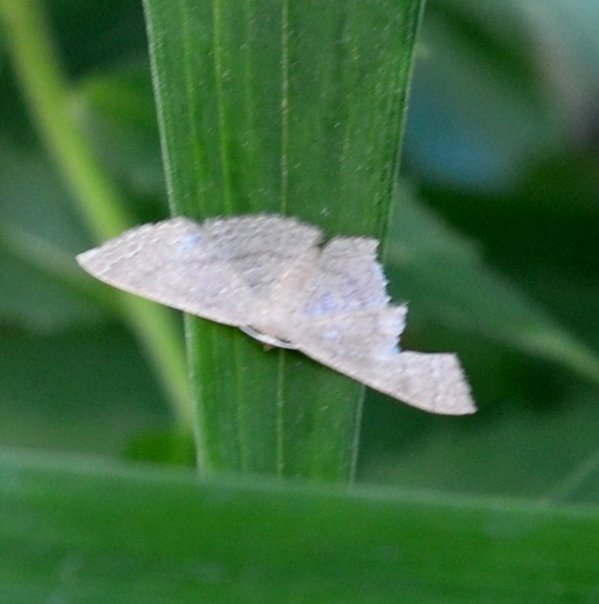
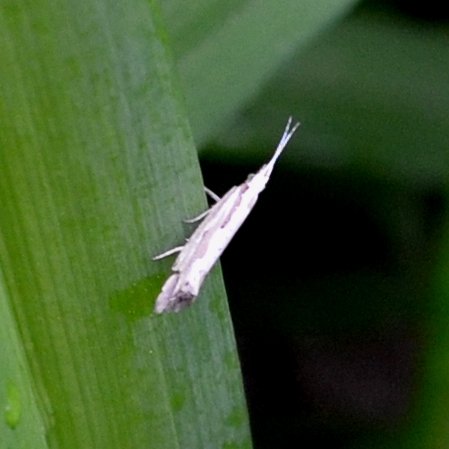
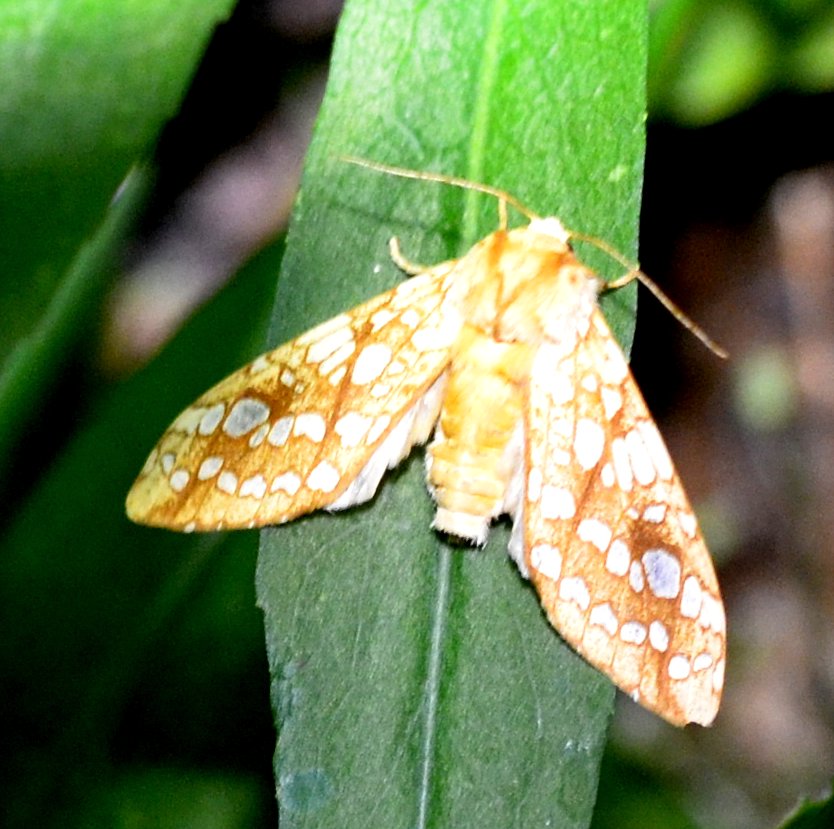
Damselflies and dragonflies appeared several times. They are fairly cagey when it comes to huge humans wielding things that whirr and shine lights. But I did manage to get a couple. Here is a female of the brightly iridescent Ebony Jewelwings. It's her mate that has the bright blue-green iridescent colorings. The bright reddish one is the female of the Eastern Forktail.
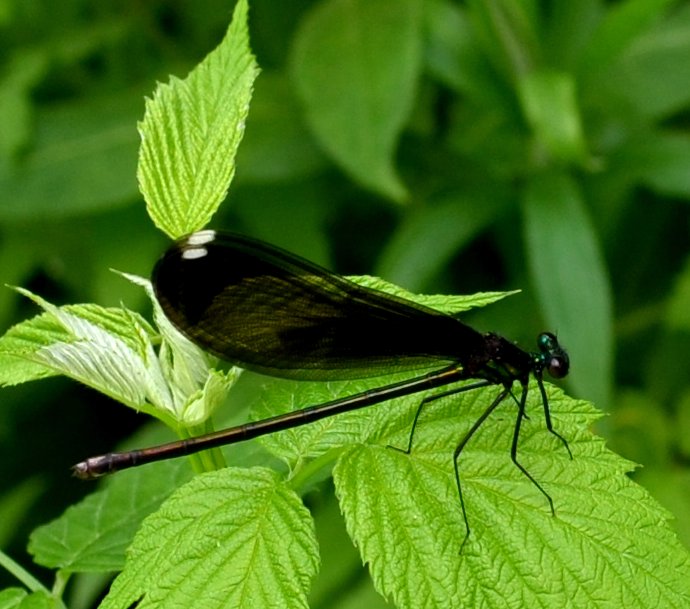
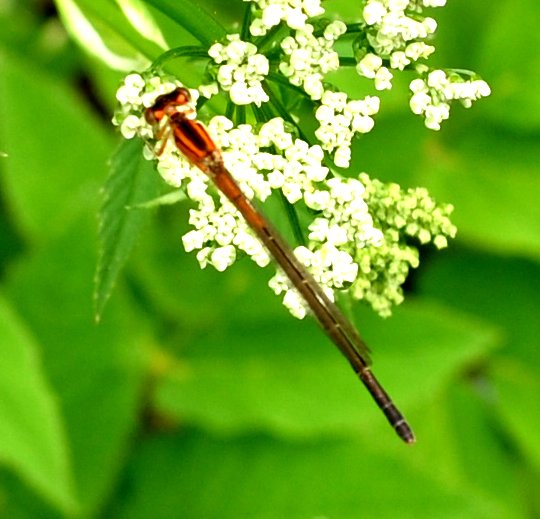
Flower Break! The Dame's Rocket is really pretty but it's quite invasive, so I'm going to pull up most of it after the blooms are gone. Several kinds of ferns are in full display now but some are still unfurling. This peony bud still has little ants picking away at the seams.

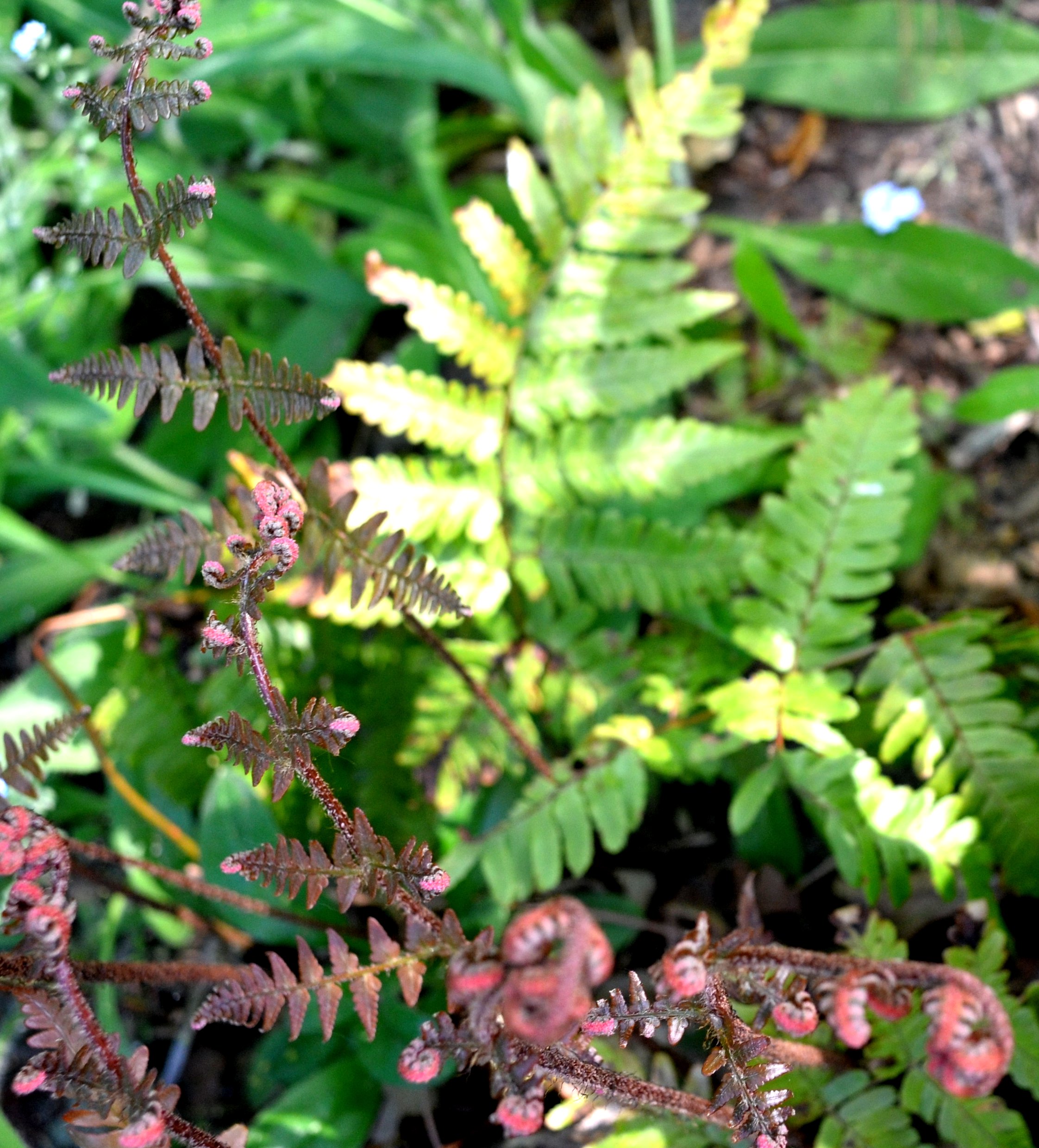
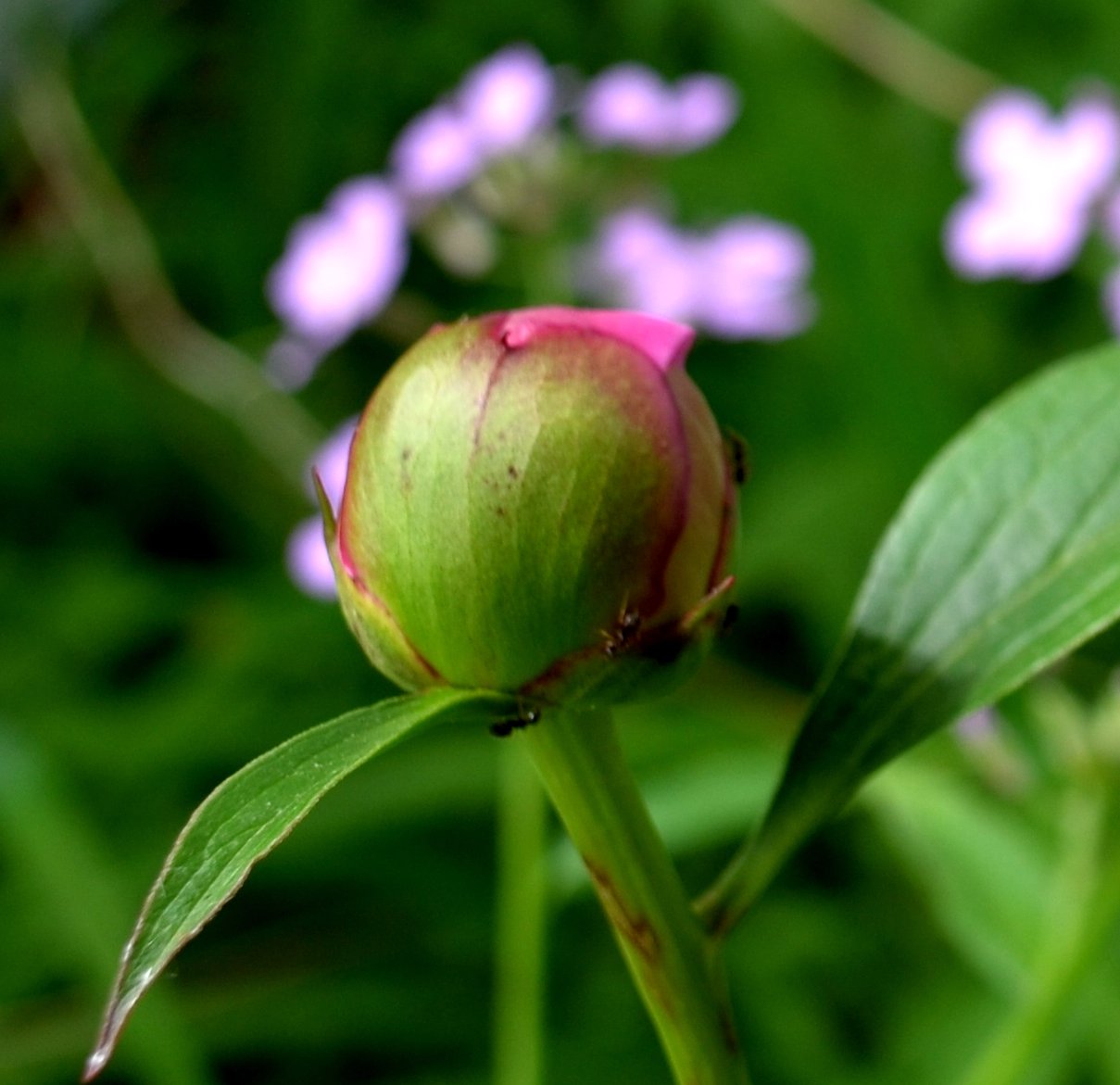
We have LOTS of flies now. More kinds of crane flies each week. This one has one of those wing patterns that resembles block printing. The raspberry flowers are already collecting hover flies. This is one of the smallest species, but very fat. I think she is a Toxomerus marginatus. I suspect she may be pregnant. She is a she because - remember? If she were a male, her eyes would be so big that they would meet in the middle of her head. The long-legged flies are also back. I have got to practise getting them while they are still, which isn't too often.
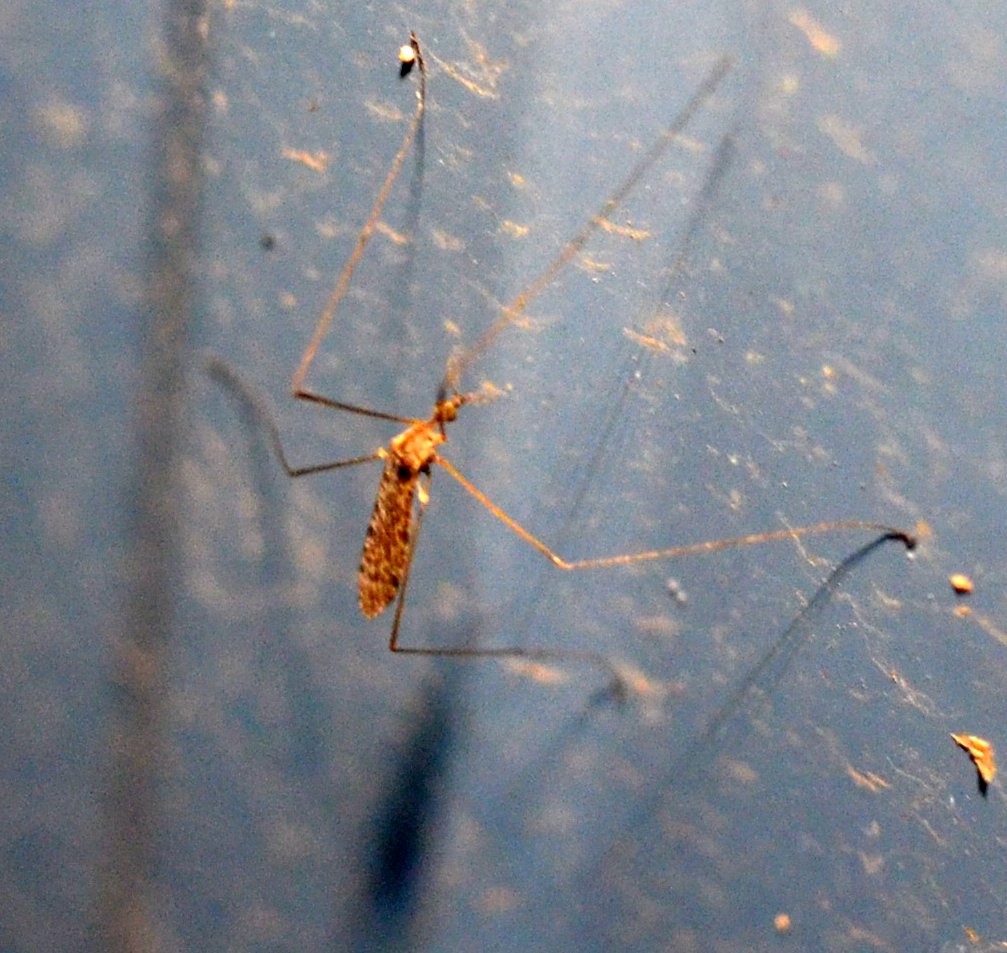
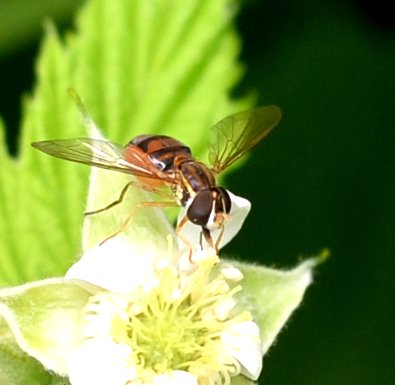
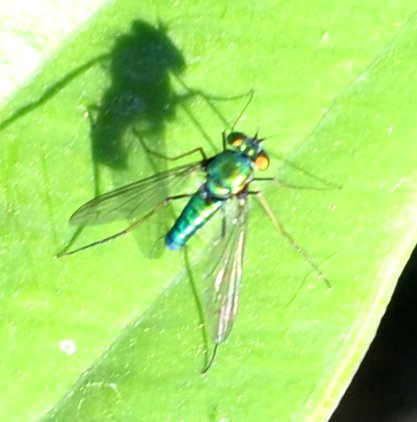
This big leathery-looking fly seems to have a face framed by several pointy spokes - who knows what it is? But I labeled it as a big midge. The second fly here is also a midge or mosquito. I'd go with female midge as it doesn't have big antennae which the male of either would have, and it doesn't have the big biting tool that a female mosquito would have. The third one is probably also a midge for the same reason.
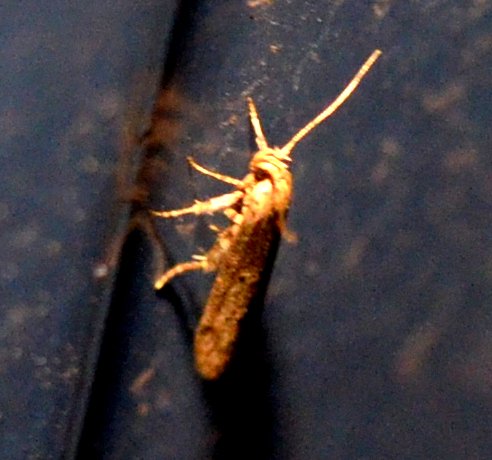
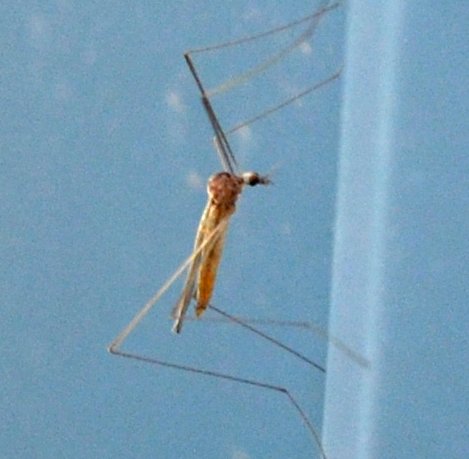
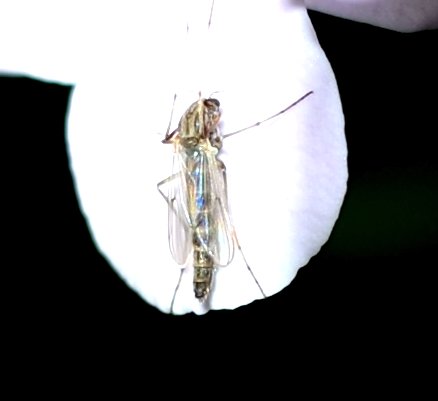
More mosquitoes! A featureless blackish one and one with black and white banded legs, which probably means it is one of the Aedes genus of mosquitoes, one of the favorite friends of summer - not.
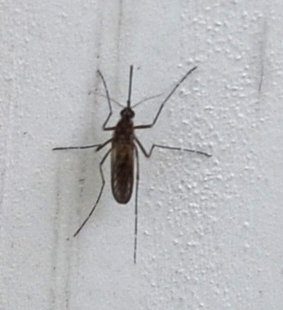
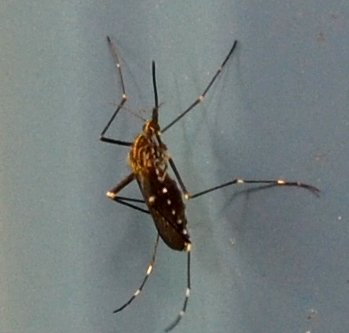
Isn't this an interesting looking fly? I'm such a sucker for a red-eyed fly, like this second one. But one of my very favorites is this Picture-winged fly.

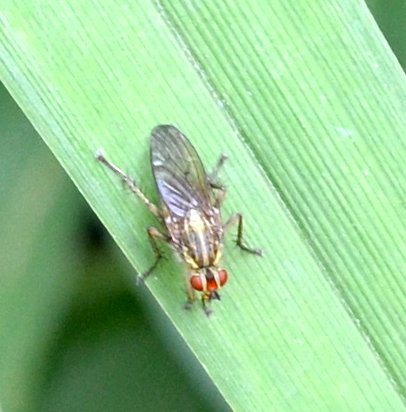
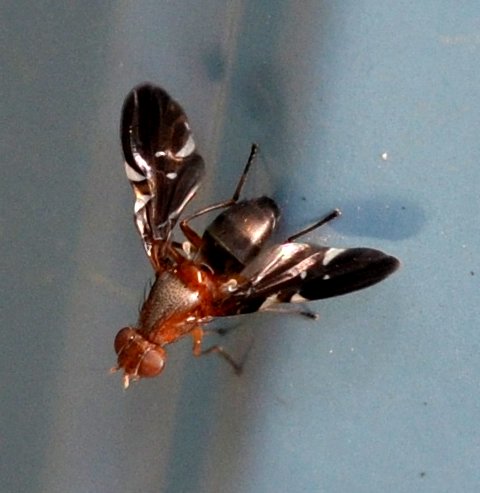
Why is this fly called a scorpion fly? I'm thinking it is because its tail is tightly rolled up over its back. Last year the snipes seemed to stay around for weeks and weeks. But this is one of the last ones I've seen this week. This last one looks like one of those hover flies, but I didn't see it hovering. (Syrphid flies are also called hover flies.)
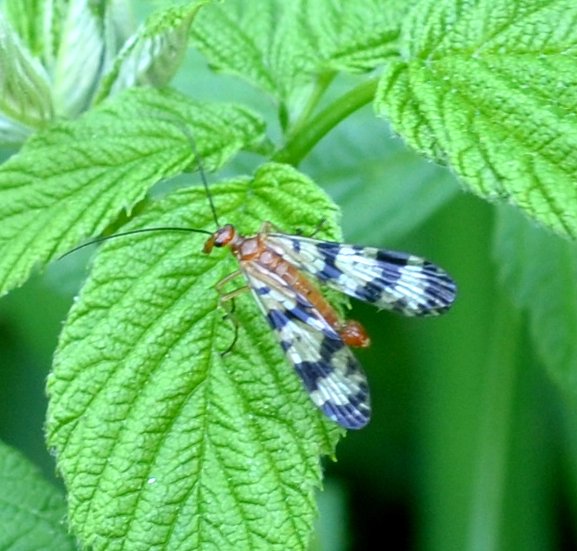
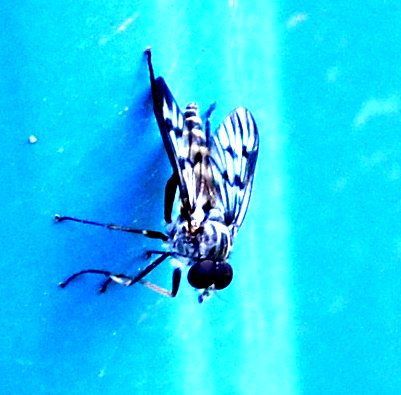
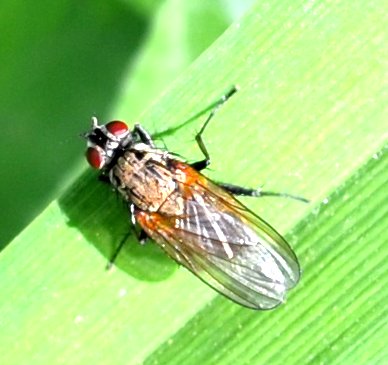
Here are three grey tree frogs that were hanging around the night of the toads. The middle one is NOT one of the usual colors grey tree frogs can assume. (It was near the light of the lamp.)
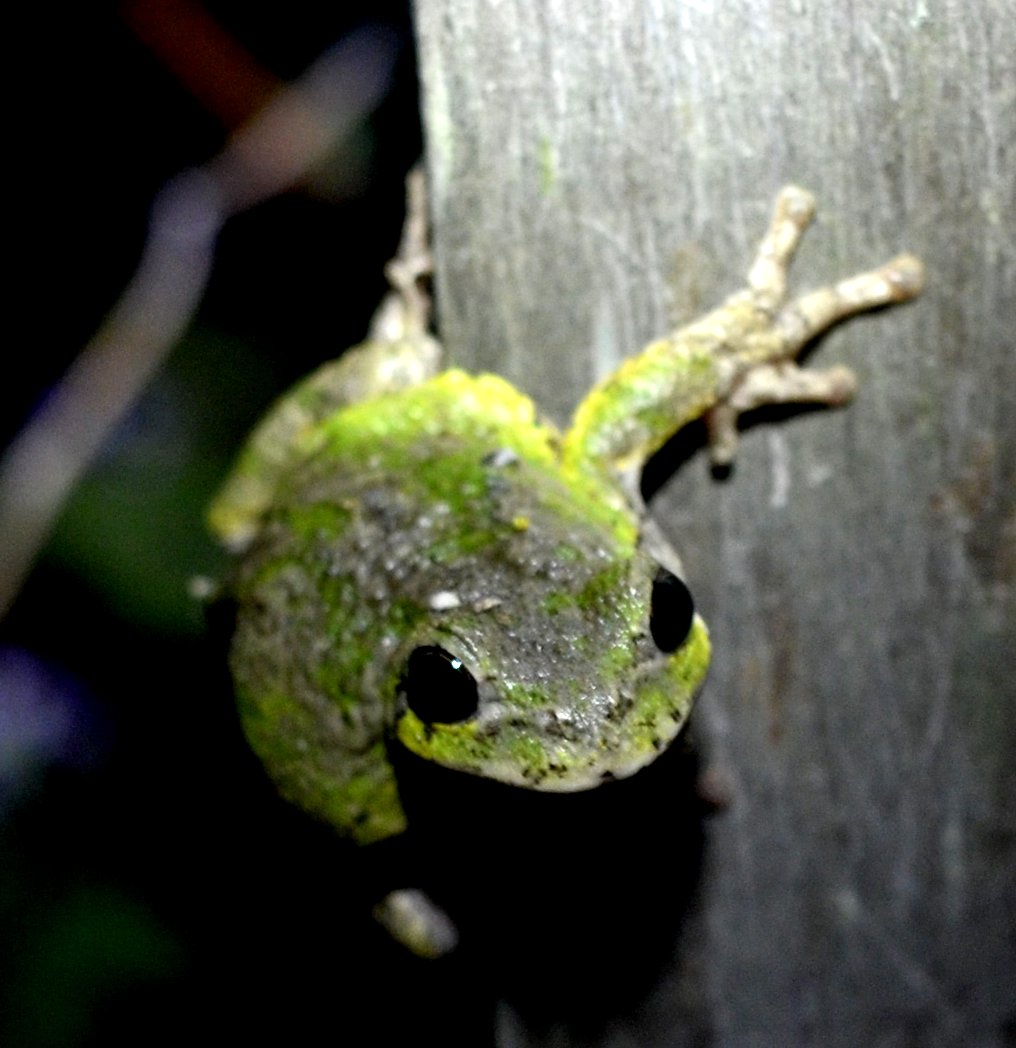 .
.
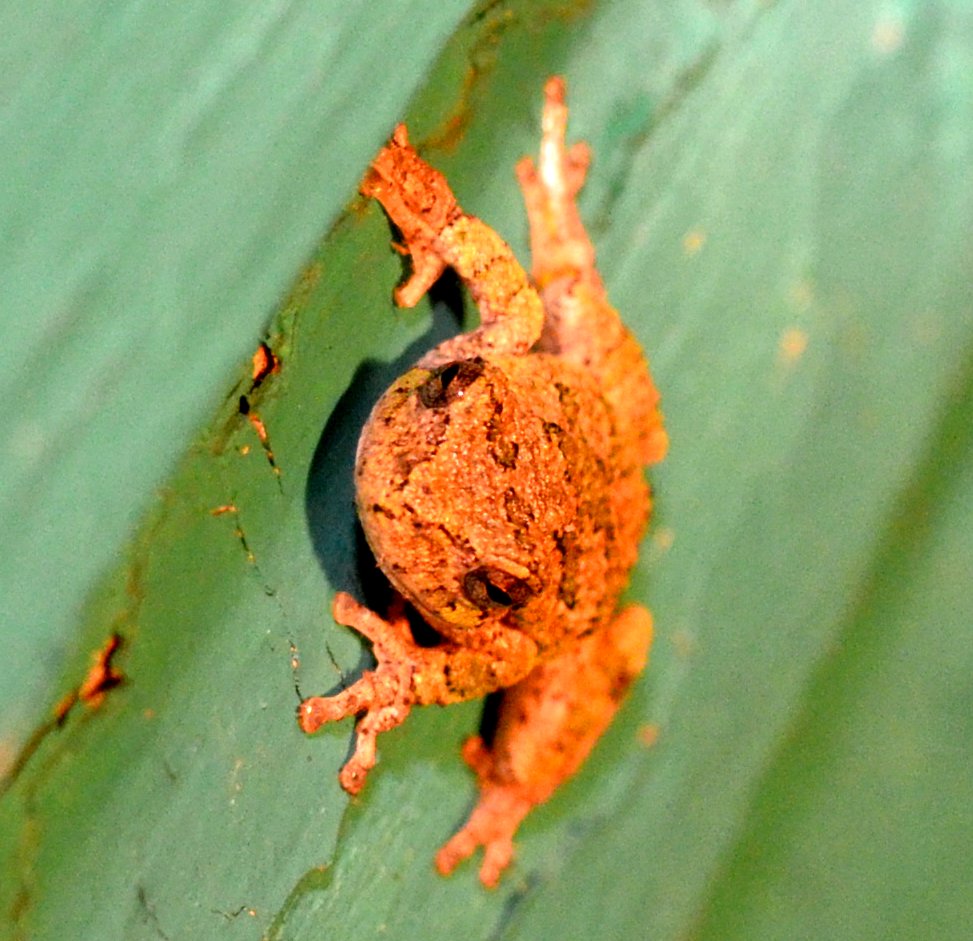

The harvestmen (or [grand]daddy-long-legs) are big enough now that their patterns can be distinguished...
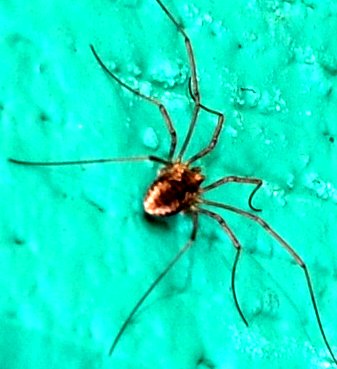
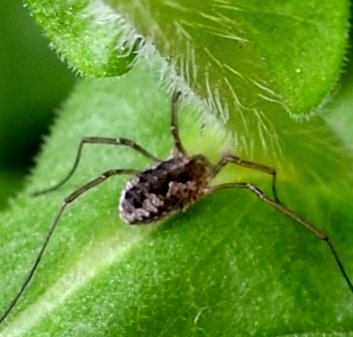
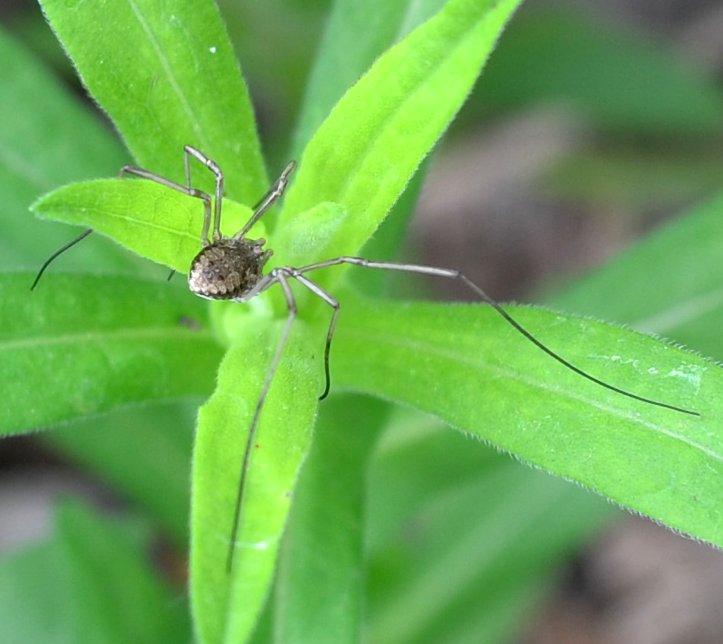
This spring has been a rich one for hymenoptera: ichneumon wasps, braconid wasps (parasitic wasps), a few sawflies.


These last two ichneumons were attracted to the lamp I'd brought out for toad night.
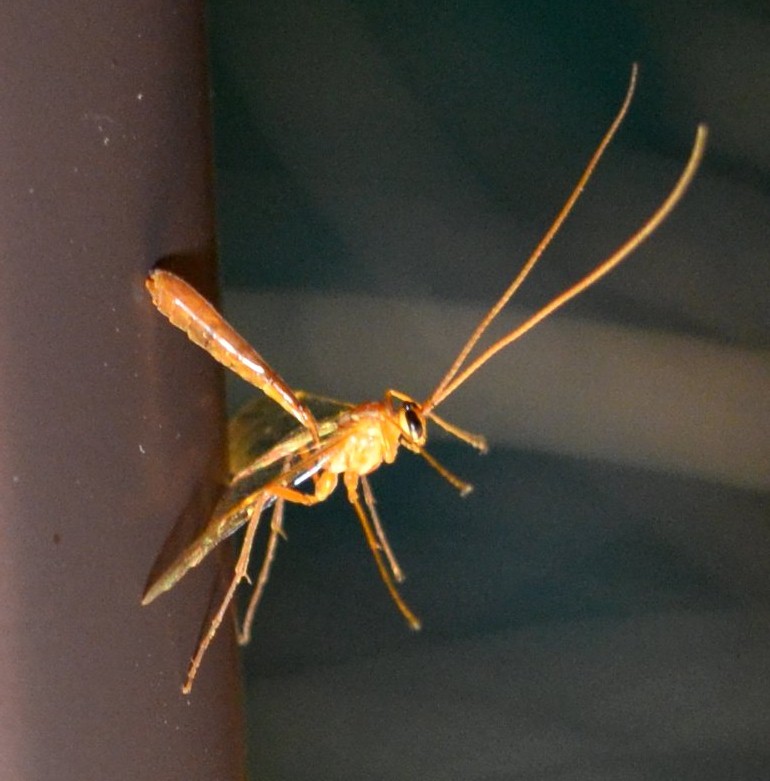
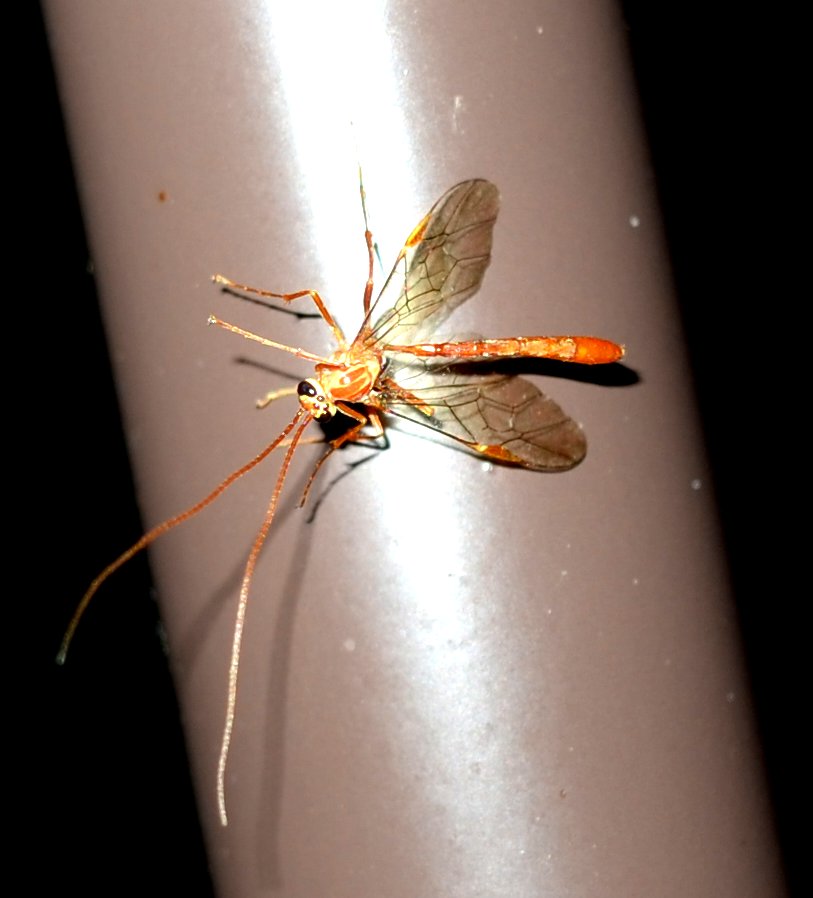
This beautiful blue ichneumonoid and this lovely long-tailed one (probably a Therion)were found in full daylight in the raspberries. The long-tailed one looks for all the world like a fairy being drifting along always out of reach until this one just plopped down and let me have a several minute shoot. But nobody is totally lacking in a predator. Here is a gigantic insectivorous fly having an ichneumon feast.
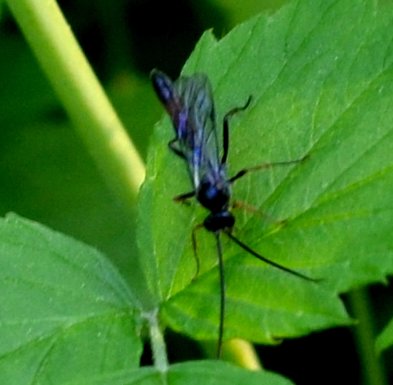
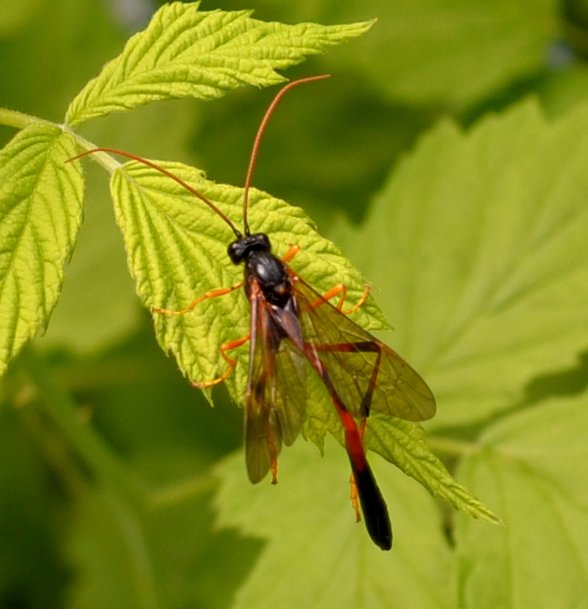
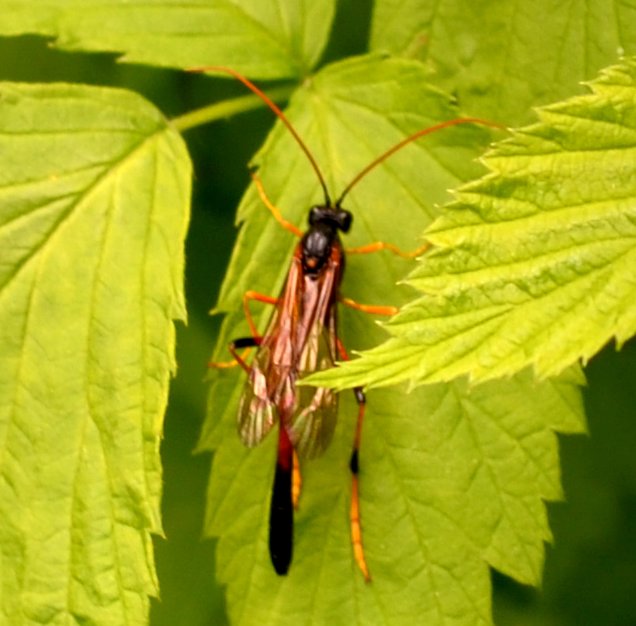
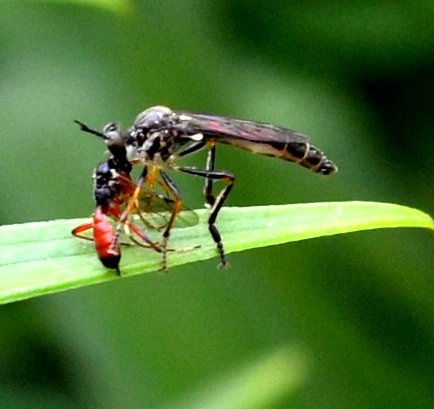
More spider babies. They look like the baby Cross Orb Weavers from last year. We'll see who they turn into this year. This lovely sleek red-legged black spider was a new one to me! I still want to call it a Filmy Dome Spider, but no such ID yet. The common house spiders are getting really big now and you can see their subtle color changes.
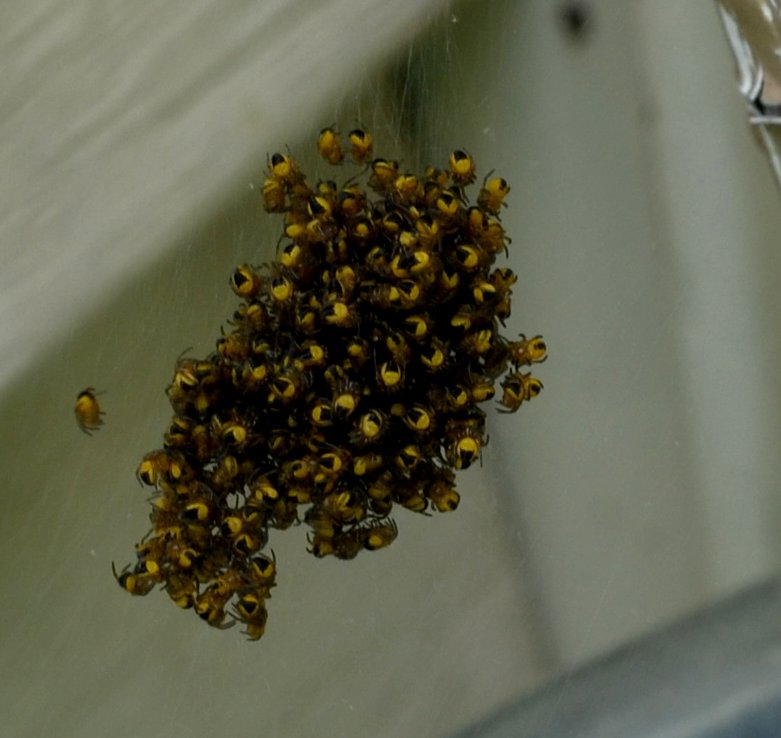
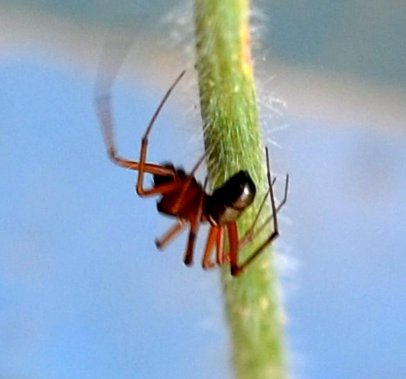
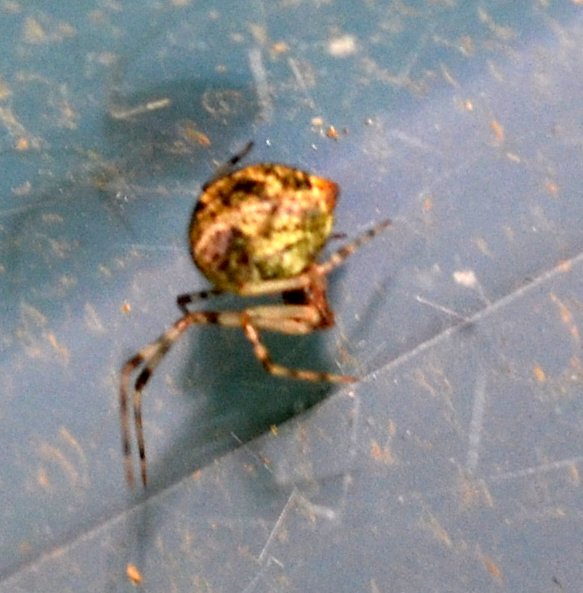
There is always some murder and mayhem going on. It was dark down inside this Dame's rocket flower head, but that seems to be a tiny crab spider taking on another killer, an assassin bug nymph. Of course the crabs aren't the only enemy of the assassins. This ground crab spider is lovely dark shades of purple. And here's another ground crab of two tones.
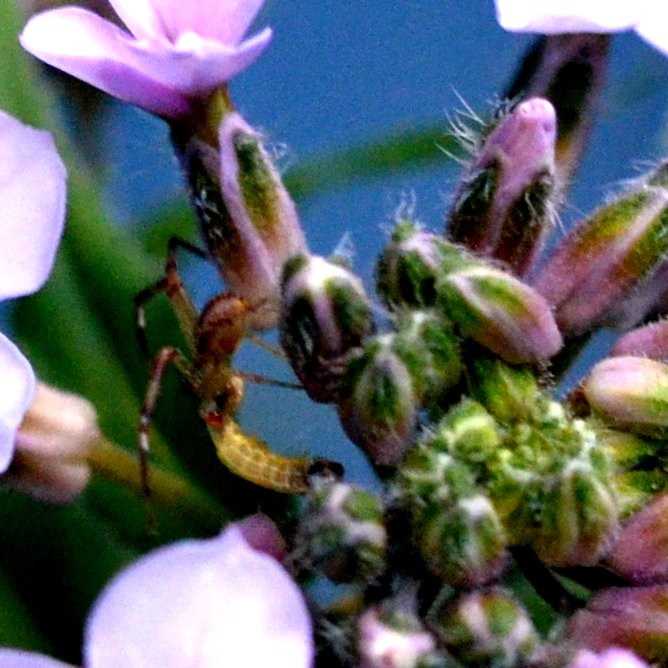
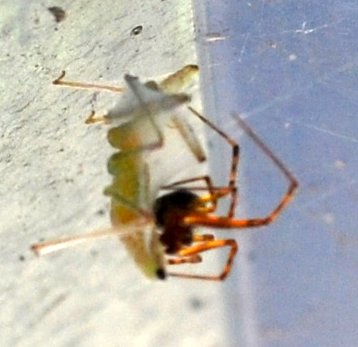
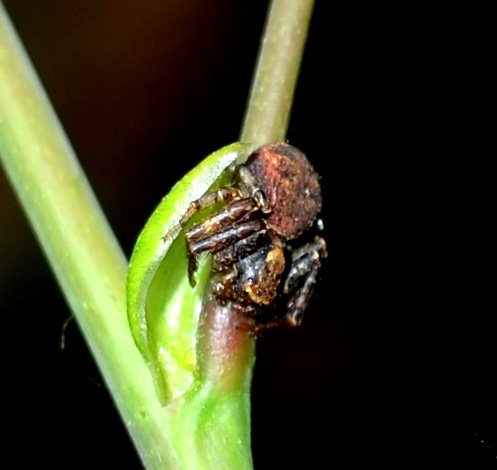 "
"
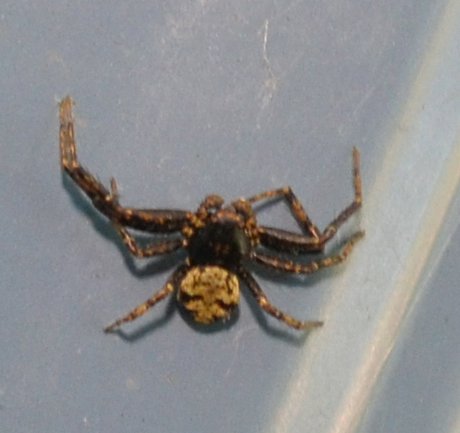
Remember the ghost spiders? This one was lurking near a nest of baby spiders. This one is either a grass spider or a jumper. But this is the little orchard orb weaver grown up a bit.

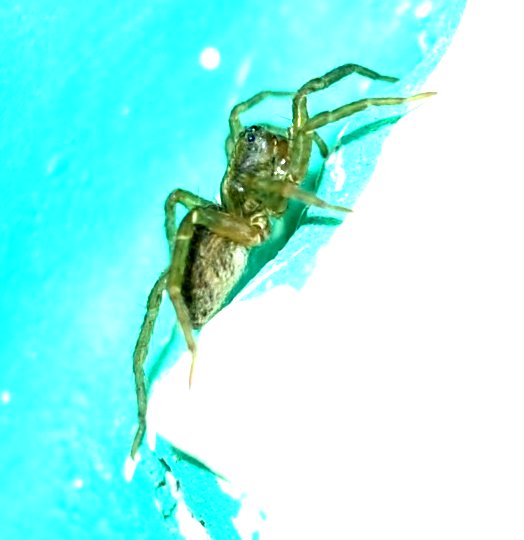
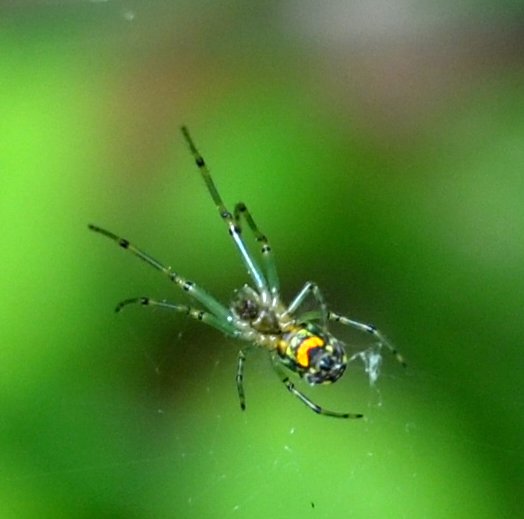
We had several kinds of jumping spiders. Here is a cherished view of the bold jumper head on. You get to see not only its headlight eyes but also its glowing aqua mustache. This yellow striped one is an unknown, but it holds itself like a jumper. Finally we jump to the newest old friend of the spring, a young pirate spider!
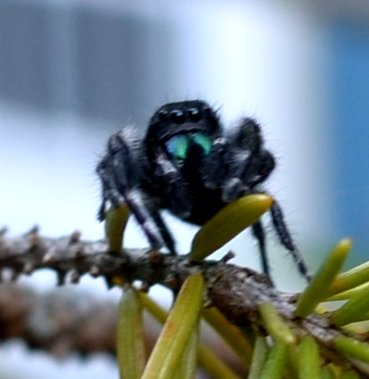
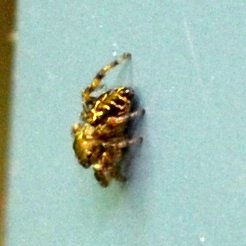
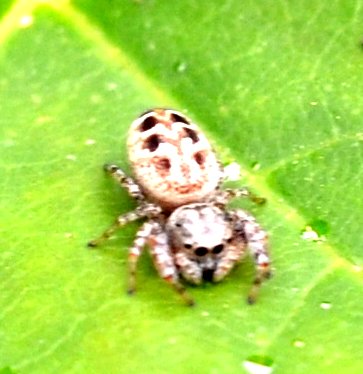
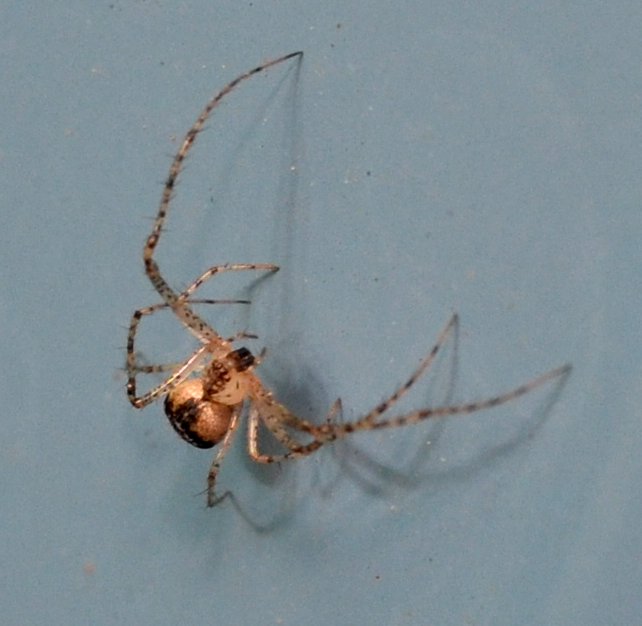
You probably read about these toads in the piece in which I stayed out most of one night watching to see who was killing my toads. Here are a couple of pictures taken from that document. It seems that only a very few tadpoles resulted from the mating of one pair. Sigh.
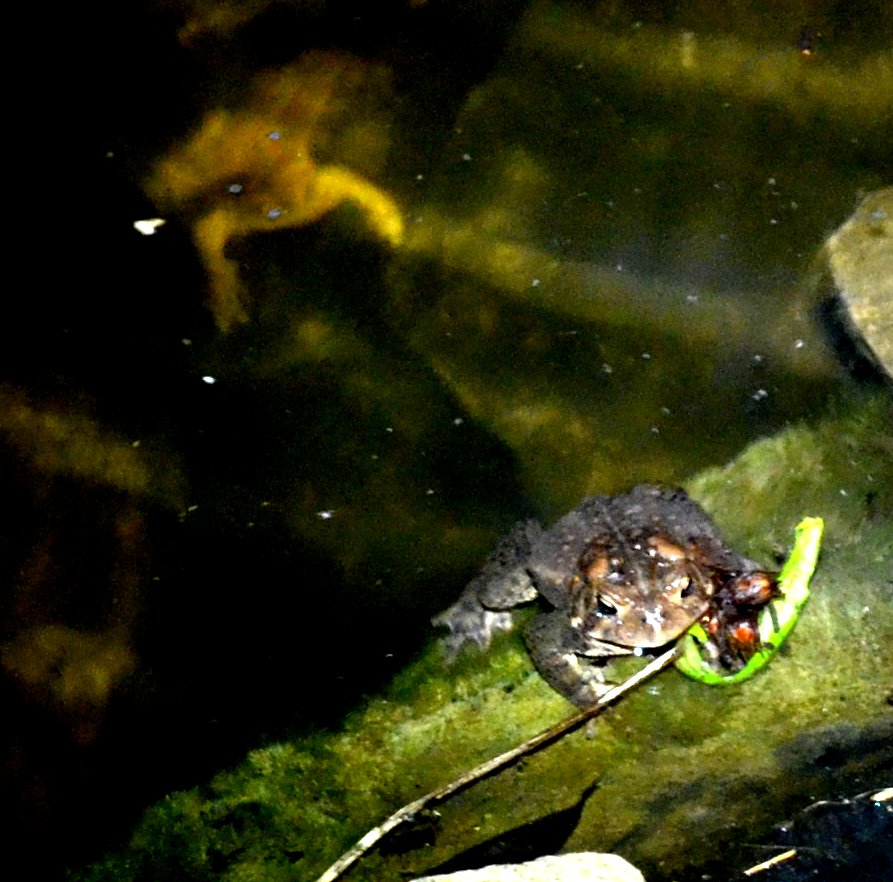
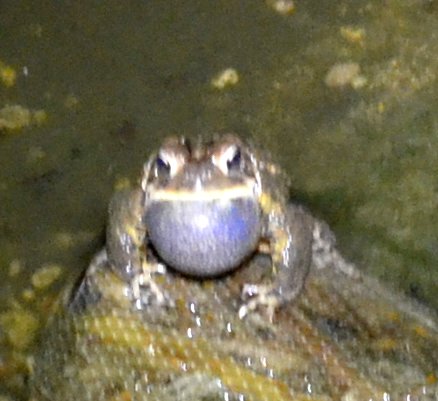
Let's finish with the wasps. Both kinds of paper wasp (Northern, European) have been busily scraping pulp for their paper and gathering water from the pond. What a fetching picture of a European! This next view shows some of the eggs in the upper cells. But notice that the girls have been capping some of the lower cells. I didn't get a chance to see what they were putting in their, hopefully healthy hatchlings and a few mashed up bugs for food. Who knows? I hope we find out! By the way, I can actually run the air conditioner and it doesn't seem to bother them. Oh- here is the other kind of paper wasp, the Northern, getting pulp out of my fence!
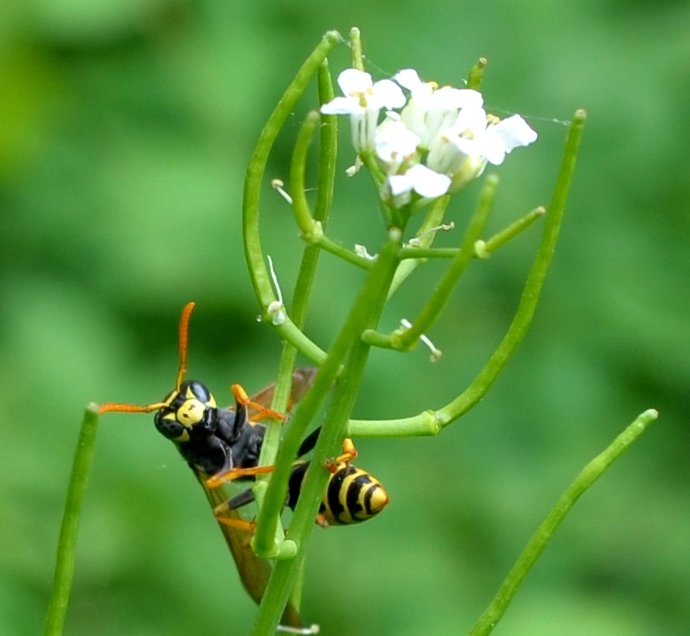
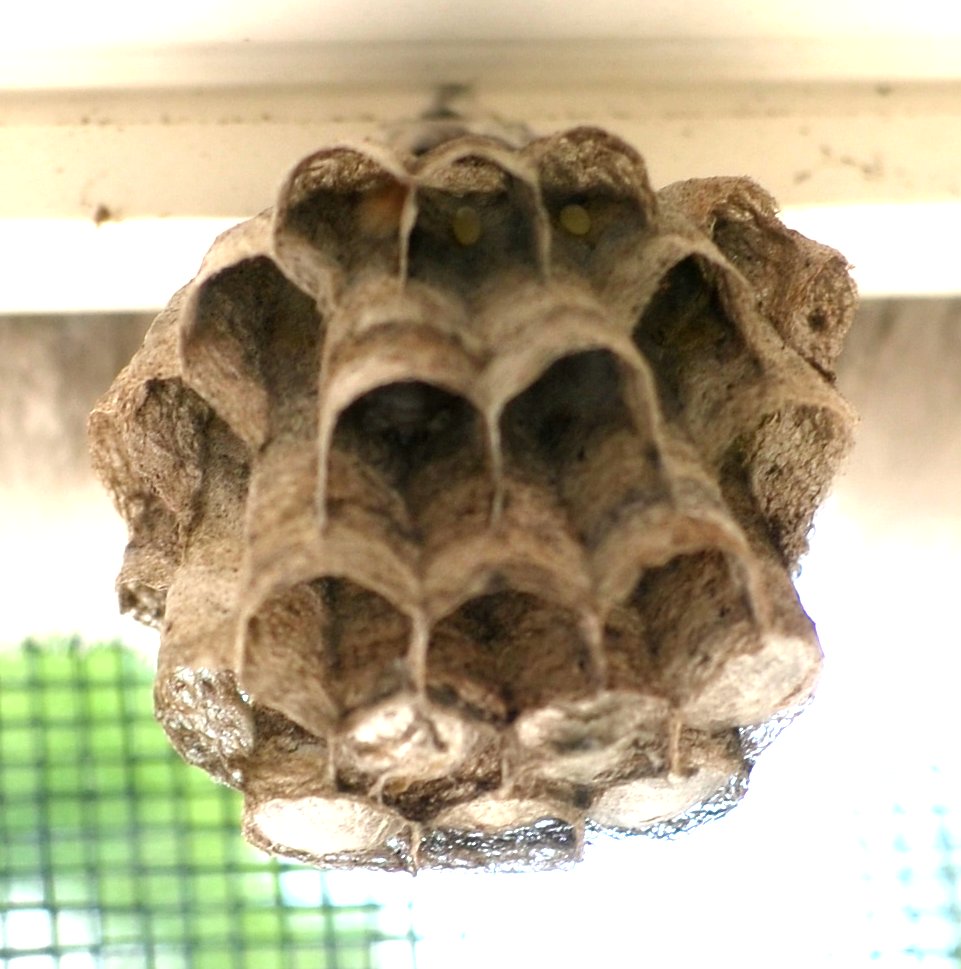
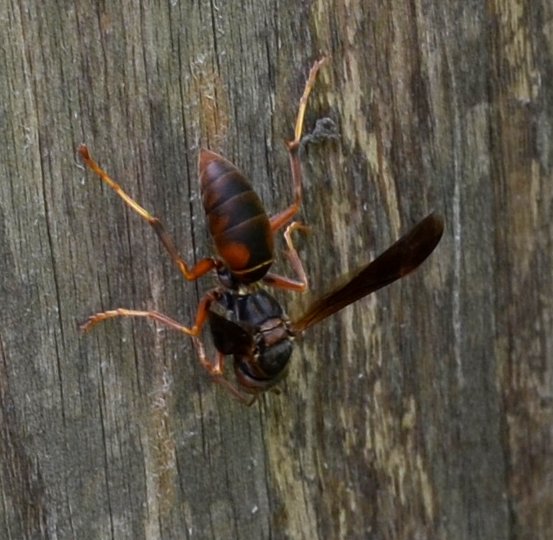
That is about it. There are just too many things showing up around here these days. But we'll get back together next week or so.
Have a good couple of weeks till solstice. I will be dreading having my sinuses reamed out. But it has really gotten to be necessary.
Thank goodness the bugs will be here looking just winsome. Love!
Back to May 22
On to June 19
Back to 2016 menu
Back to main menu
copyright Martha O'Kennon 2016






 in dandelion with mystery- 5 27 16.jpg)




 .
.

















































 .
.


















 "
"












